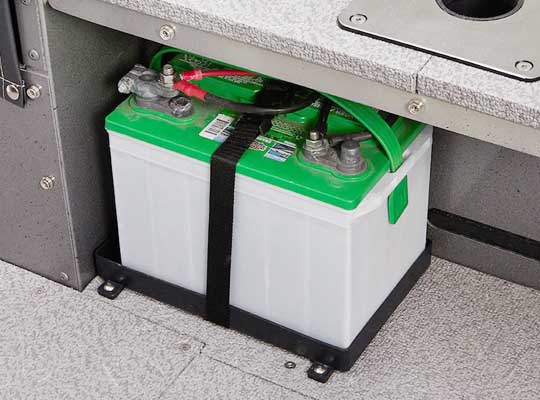CHICAGO- According to a research report “Marine Battery Market by Battery Type (Lithium, Fuel Cell, Lead-acid), Propulsion Type (Fully Electric, Hybrid, Conventional), Application, Sales Channel, Ship Range, Nominal Capacity, Battery Design, Battery Function and Region – Global Forecast to 2025”, published by MarketsandMarkets, the Marine Battery Market is estimated to be USD 250 million in 2020 and is projected to reach USD 812 million by 2025, at a CAGR 26.5% from 2020 to 2025.
Ask for PDF Brochure: https://www.marketsandmarkets.com/pdfdownloadNew.asp?id=210222319
Implementation of sulfur 2020 rule and rise in the conversion of propulsion systems in passenger vessels are the major factors anticipated to boost the demand for marine batteries during the forecast period. The rise in seaborne trade across the globe, growing maritime tourism industry, and the development of lithium batteries are the other factors anticipated to fuel the growth of the marine battery market.
75–150 kW segment to register the highest CAGR from 2020 to 2025
By ship power, the 75–150 kW segment of the marine battery market is projected to register the highest CAGR during the forecast period. Medium-size passenger ferries are considered under ships having power between 75 and 150 kW. The need for a reduced or zero-emission transport system is high across countries. As per the International Maritime Organization’s MARPOL convention for the prevention of pollution from ships, the sulfur content present in the fuel of ships need to be reduced from 3.5% to 0.5% from January 2020. Countries such as Japan, New Zealand, and Australia are also moving toward using battery propelled fully electric ferries for passenger transport. Norway has incorporated fully electric and hybrid technologies in its ferries.
50–100 KM segment is projected to register the highest CAGR from 2020 to 2025
By ship range, the 50–100 KM segment is estimated to witness the highest CAGR during the forecast period. This segment includes inland container vessels, small cruise ships, fishing vessels, and research vessels. Yara’s (Norway) 120 TEU container ship, Yara Birkeland, can travel 56 km and is a fully electric ship. Another all-electric ship was constructed by Guangzhou Shipyard International Company Ltd. in December 2017. This ship can travel 80 km on a single charge. Operational and fuel cost savings are benefits offered by fully electric ships for operators, but the high capital expenditure and port side development are major challenges faced by ship manufacturers.
Browse in-depth TOC on “Marine Battery Market“
203 – Tables
50 – Figures
232 – Pages
Inquiry Before Buying: https://www.marketsandmarkets.com/Enquiry_Before_BuyingNew.asp?id=210222319
Europe marine battery market is projected to register the highest CAGR from 2020 to 2025
By region, Europe is expected to witness substantial growth in the marine battery market during the forecast period. International shipping is a large and growing source of greenhouse gas emissions. Thus, the European Union and the International Maritime Organization have come up with regulations on CO2 emissions and the presence of sulfur in fuel. Awareness about carbon emissions is leading shipowners and integrators to switch from traditional diesel-driven engines to battery propulsion systems. Domestic shipping in European countries has already been experimenting with battery-electric propulsion, and this trend is expected to continue.
The marine battery market has been gaining traction over the past few years due to the presence of several established companies as well as startups. Some of the major market players are Corvus Energy (Canada), Akasol AG (Germany), EST-Floattech (Netherlands), Siemens (Germany), Spear Power Systems (US), Echandia Marine (Sweden), Sterling PBES Energy Solutions (Canada), Furukawa Battery Solutions (Japan), Lithium Werks (Netherlands), Exide Technologies (US), Craftsman Marine (Netherlands), PowerTech Systems (France), Kokam Co. Ltd. (South Korea), Toshiba Corporation (Japan), XALT Energy (US), EverExceed Industrial Co. Ltd. (China), U.S. Battery (US), Lifeline Batteries (US), Saft (France), Forsee Power (France) and Leclanché (Switzerland).
Related Reports:
Electric Ships Market by Power Source (Fully Electric, Hybrid, Plug-In Hybrid), Autonomy (Manned electric ships, Remotely-operated, Fully Autonomous), Ship Type (Bulk Carrier, Gas Tanker, Tankers, Barge, Passenger Cruise, Aircraft Carrier, Amphibious, Destroyer, Frigate) and Region – Global Forecast to 2030
Autonomous Ships Market by Autonomy (Fully Autonomous, Remote Operations, Partial Automation), Ship Type (Commercial, Defense), End-Use (Linefit, Retrofit), Solution (Systems, Software, Structures), Propulsion and Region – Global Forecast to 2030









